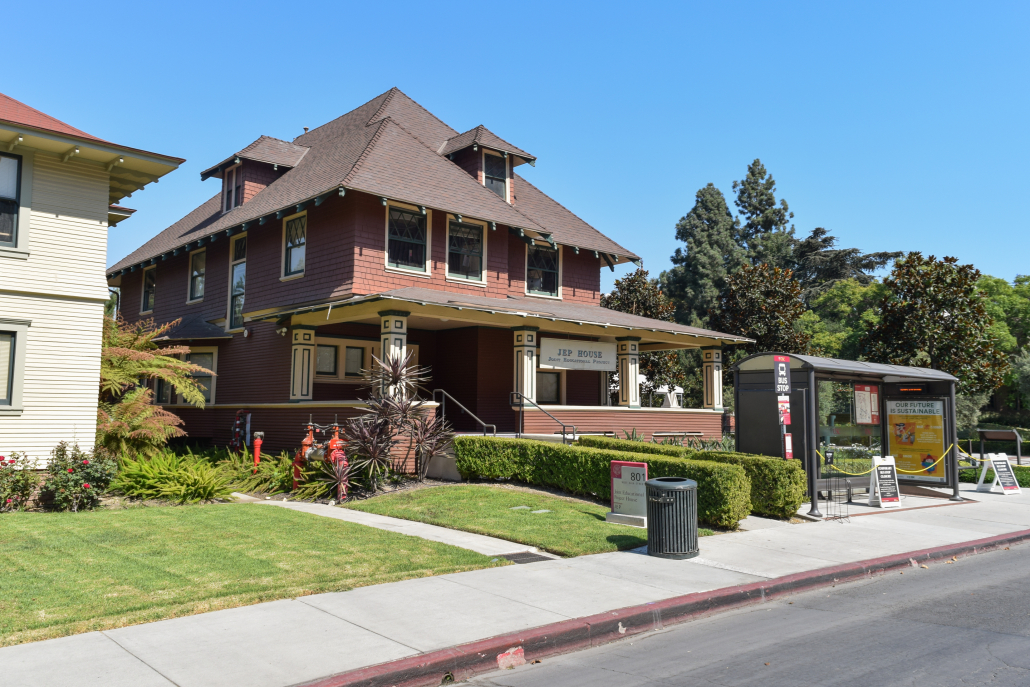JEP launches its virtual after-school program

When state and local governments instituted lockdowns in March, thousands of students in Los Angeles County faced an unprecedented level of uncertainty. For USC’s Joint Educational Project, this meant temporarily halting student tutor programs.
Before the pandemic, JEP tutors would teach science, literature and a multitude of other subjects to neighboring K-12 schools. The tutors served as an additional support to assist teachers in the classroom.
“When everything went virtual in March, we ended the [after school] program,” said Susan Harris, executive director of JEP. “The University was telling us that we couldn’t send students anywhere, and then [Los Angeles Unified School District] shut down as well.”
During this hiatus, JEP worked with other programs at USC to develop a system to help partnering schools, students and teachers adjust to the virtual learning environment. Over the summer and alongside the Keck School of Medicine’s “Care for the Caregiver” program, JEP’s student tutors provided tutoring services to the children of coronavirus health care providers.
“It was completely crazy,” Harris said. “All of these teachers were expected to just over night figure out how to teach online and the schools were not set up in the best way for that.”
Making pre-recorded videos that students, parents and teachers could access at any time proved to be the most suitable course of action. The tutors are now recording short videos on specific sub-topics that are then shared with teachers and can be played any time during and after class.
Dieuwertje Kast, director of JEP’s STEM education programs, said they had changed their curriculum to reflect the home setting and tried to make it accessible to the different students at the schools JEP serves.
“We work primarily with Title One or low- income students,” Kast said. “And so we know that accessibility to some of these supplies is difficult.”
Engaging students virtually has continued to be a challenge for JEP and its partnering schools. Nelly Cristales, a second-grade teacher at 32nd Street USC Performing Arts Magnet school, said that internet connectivity issues coupled with the distractions that students experience in their homes have presented their own challenges to schooling. Cristales has employed pictures, assigned drawing activities and used the visual arts as mediums to keep her students focused.
“They get frustrated because they’re logged out three, four times a day. They’re lagging, I lag,” Cristales said. “They’re pulling hairs and strings like I am on my side, but I always try and be a reflection. I don’t hide that I’m frustrated. But I tell them, because I call them the Trojan scholars, we fight on.”
Many of the areas where Cristales’ students reside often don’t have stable internet connection, and many have to travel to other places to take classes. Though L.A. County has provided students with computers and internet access, broadband issues persist in many of these communities.
Cristales said that while some technical issues will always exist in a virtual setting, she has revised her curriculum and availed JEP as a support system to increase engagement and as a workaround for unstable internet connections. Cristales said that individually reaching out to students’ families to ensure they have the right resources has been an effective tool to ensure participation in the virtual space.
“JEP comes in and gives that extra support, outside school hours where this child is more relaxed … so it’s a blessing,” Cristales said. “Through JEP we’re getting many courses live, which is supporting our instruction. Now any parent can access it at their own time and so they have access to a one-on-one.”
Brooke McMahon, a graduate student at the Rossier School of Education, said the new learning domain has made her teaching style more creative. Last week, utilizing makeshift blocks of steak, McMahon taught her students a lesson on pathology. A virtual field trip to McMahon’s mother’s pathology lab further provided a platform for her students to learn more about the subject.
“I think it’s great for myself and for my other two teachers just to see what kids are getting and what they need and how we can be better teachers to engage people,” McMahon said.
For Kast, bite-sized activities like the ones organized by McMahon mirror the in-person learning exercises that students typically participate in within a classroom.
“We’re doing our best to try and emulate as much of our in-person program as we can in the virtual space,” Kast said.
The coronavirus has laid bare the intrinsic inequities prevalent in the educational framework of communities where JEP’s students serve. As JEP’s executive director, Harris has tried to instill a sense of responsibility within student tutors to faithfully serve their communities and recognize deeply rooted systems of inequality.
“[We have] really shifted our curriculum to think a lot more about some of the bigger issues that are happening related to the pandemic,” Harris said, “Black Lives Matter and some of the issues surrounding inequality and how it disproportionately affects kids of color in the community that we serve.”

